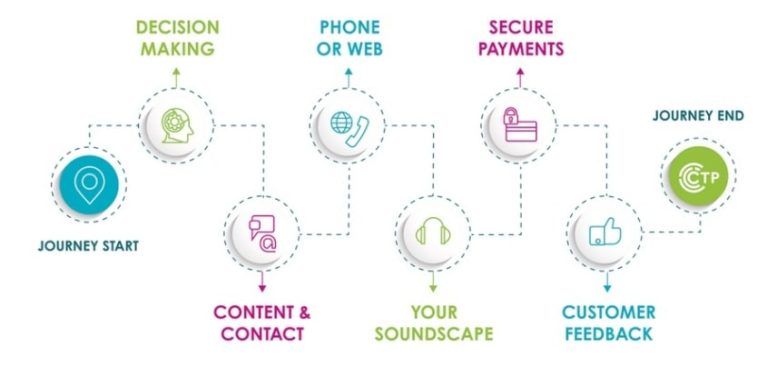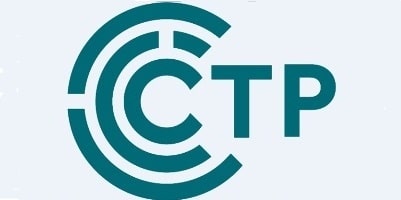How to build a customer journey map for your contact centre that works – Read on to discover how to build a customer journey map that works…
A potential client recently came to us asking for advice on customer journey mapping. They knew what it was and that they needed to do it, but they weren’t sure how.
This is a common scenario when it comes to customer journey mapping. Many people think they know how to do it because it sounds simple. However, there’s a difference between doing it in a way that tells you what you think you already know and doing it in a way that gives you most value.
This article gives a brief definition of customer journey mapping and the benefits of doing it properly before outlining our top 10 tips for how to do it well, to help you reap those benefits and avoid the most common mistakes.
Customer journey mapping – a quick definition
The concept is straightforward – to get your customer journey set out in a graphical way that indicates how it’s performing. Typically, you have a left-to-right map of some description. You describe what’s happening – what each step is – and align this with customer feedback. This alignment uncovers your failure points – those parts of the customer journey that you need to improve – as well as identifying what’s working well.
As this influential article from the Harvard Business Review puts it, a customer journey map is:
“A diagram that illustrates the steps your customer(s) go through in engaging with your company, whether it be a product, an online experience, retail experience, or a service, or any combination. The more touch points you have, the more complicated — but necessary — such a map becomes.”
The benefits of doing customer journey mapping the right way
When done well, customer journey mapping gives you an understanding of how your customer journeys are performing and helps you to manage them going forward. It provides evidence on which to base your customer journey decisions.

It’s almost impossible to manage your customer’s journey and your customer’s experience if the process that’s being followed differs from how it’s supposed to be. When your customers are having a different lived experience to the one you think they are, this is confusing. It skews all your data and makes it very difficult to make any decisions on how to improve.
Here are our hard-earned tips and practical examples to help you get the most out of customer journey mapping:
Tip #1: A customer journey map is not the same as a process map
A process map is a linear diagram of the company’s processes, while a customer journey map is what the customer experiences when they interact with you. One of the key reasons for a customer journey map is to uncover those gaps between official processes and how things really work.
One of our earliest jobs at Customer Touch Point was for a growing company that wanted us to ensure their processes were robust. We quickly found a gap between the documented business process in the business manual and what actually happened on the ground.
Because the written processes didn’t work for the company’s agents, they developed workarounds so effective that new starters to the company got trained in the workarounds. The official written processes were never updated.
Tip #2: Workshops are the best way to map out your customer journey
In simple terms, it still works best to get in a room with a whiteboard, markers and sticky notes, to get a few different people together in that room, pick a journey or process and say: “Right, what happens first?”
Then map it out, bit by bit. Doing this face-to-face is best because it allows for some debate and a free flow of ideas. When mapping out processes and matching them to customer experience, you’ll want to have different voices present to question whether the official way of doing things is what’s really happening.
Tip #3: Your workshops need to include multiple points of view
The optimum number of people in a workshop varies according to the complexity of processes in a business, but for any process or journey, you need at least two people and they should come from different parts of the business. That way, you’ll get contrasting perspectives on what the customer experience actually is and how things really work.
In other words, the value of your workshop is enhanced the greater the variety of relevant internal experience and opinion you can include. For a thorough process, follow up your initial workshop with a validation workshop, usually with more senior people, to review the journey you’ve mapped out.
Tip #4: Decide on the appropriate level of detail
There are four or five different levels of process mapping. You can go high-level or you can go granular, but ideally you want somewhere in the middle that’s going to give you enough data to work with without it being overwhelming. The more common problem is that most people don’t go into enough detail.
Here’s an example of a good level of detail to aim for. In an Interactive Voice Response (IVR) system, you can have a handling error which doesn’t route people properly and blocks the whole journey. It could be that the audio message is correct, the customer presses the right button, and the documentation says it’s all correct, but it just doesn’t work. Without going to the right level of detail, you would never uncover this problem.
Tip #5: How to bring in the customer point of view to find and fix your points of failure
Effective customer journey mapping requires you to analyse how the journey is performing from your customers’ point of view at each of the stages you have documented on the map.
Once you have a journey map that documents all parts of the journey to the right level of detail, align this with your customer metrics. Whether you use Customer Satisfaction scores or Customer Effort, the score should tell you with a good level of precision whether things are working well and whether they aren’t.
Those parts of the journey where you have low scores are your points of failure. These are the points of the journey where customers give up and leave, or where they complain. Often these take the form of loops into which customers get stuck and have to call your contact centre.
When you know where your problems are, you can come up with improvements and mark them on your map. After you’ve implemented that improvement and let it run for a set period, you can then rescore the journey and repeat the same exercise.
Doing this process systematically – aligning customer feedback scores to your customer journey map – allows you to:
– Locate problems and failure points
– Design and implement improvements
– Measure the impact of improvements
– Show a track record of improvements through the customer journey that you can share with internal stakeholders
– Identify what has worked (so you can replicate it)
– Identify what improvements have not worked – so you can continue to work on new improvements
All of these benefits are great, but you will never experience them to their full extent unless you use the right customer personas.
Tip #6: You need to use customer personas
If you have a particular demographic and target customer then you want to make ensure the customer journey is working for them. A 75-year-old retiree ringing a pet food company to ask what food works best for their diabetic Alsatian will have a different experience to a young single professional of 30 who’s just moved a kitten into their London flat.
You might have target personas already or you can develop them, but these are important because the experience of customer A will be very different from customer B. It’s no good testing, scoring, or optimising your customer journey unless you do so from the perspective of your target personas.
Tip #7: Remember to replicate success as well as uncovering points of failure
You’ve seen that using metrics to score the customer experience works to uncover your potential points of failure and to help you implement and track improvements. You can – and should – use this same process to help you understand what’s working well in your customer journey. When you know what’s working and you understand why, then you can look to replicate that success elsewhere in the journey.
Tip #8: The importance of measuring Customer Effort
According to Contact Babel, while Net Promoter Score (NPS) and Customer Satisfaction (CSAT) are used by 27% and 24% of boards, scores are used by only 2% of them. This tells us that most boards may be focusing on the wrong metrics.
Customer Effort can have a direct impact in your business because it tells you exactly where to look in your customer journeys to find and resolve issues. Effort scores have a much greater link to business value by helping to reduce costs while also improving your customer experience.
Read more of our thoughts on Customer Effort scores.
Note for DS – Debated caps here – I think we either need all lower case or title case if we’re using this as a score name/type. Open to thoughts.
Tip #9: How to get the scope right
Companies sometimes ask us what the difference is between customer journey mapping and our customer experience audit. In brief, the CX audit focuses on what it’s like when a customer contacts you – how good or bad that specific experience is for them.
Customer journey mapping widens the scope upstream and downstream to look at anything which might have influenced the customer experience or driven customer contact – for example, sending letters than have the wrong contact number on them which might lead to a flood of calls to the wrong department.
The scope of your customer journey map should be broad enough to cover all the things that will influence or effect the journey.
Tip #10: Have the right mindset – don’t be scared of bad news
Whatever the reason, it’s surprisingly common for companies not to want to pollute their customer feedback scores when things get tough – and they’ll even turn off their customer feedback solutions. But this is exactly when you should be gathering customer feedback.
If you skew your results by trying to protect your CSAT figure, in the long run you won’t learn what you need to about where you need to improve your customer journey. You want honest feedback that’s going to help you solve problems rather than shy away from them or try to pretend things are better than they are.
Remember to go into this with the right mindset. Better to find and fix problems – and to understand and replicate what you’re doing well – than try to ignore them and have them get worse and worse.
Take the next step towards improving your customer journey
As we saw in the most recent Contact Babel Annual Decision-Maker’s Guide, 48% of B2B organisations and 53% of B2C organisations surveyed rank customer experience as the most important factor on which they compete. This makes it a more important metric than price or quality, and a key differentiator.
Good customer experience is a differentiator for businesses like yours because it can help you to improve the experience and reduce costs. Without customer journey mapping, it’s a lot more difficult to manage your CX effectively.
Find out more about how to improve your customer experience by finding and fixing the problems in your customer journeys.

Using a unique methodology and a genuine passion for doing the right thing, Customer Touch Point has helped over 500 organisations in every major sector to uncover and solve their customer contact challenges.
Customers include Nestle Purina, Legal & General and Ikano Bank.
For additional information on Customer Touch Point visit their Website





